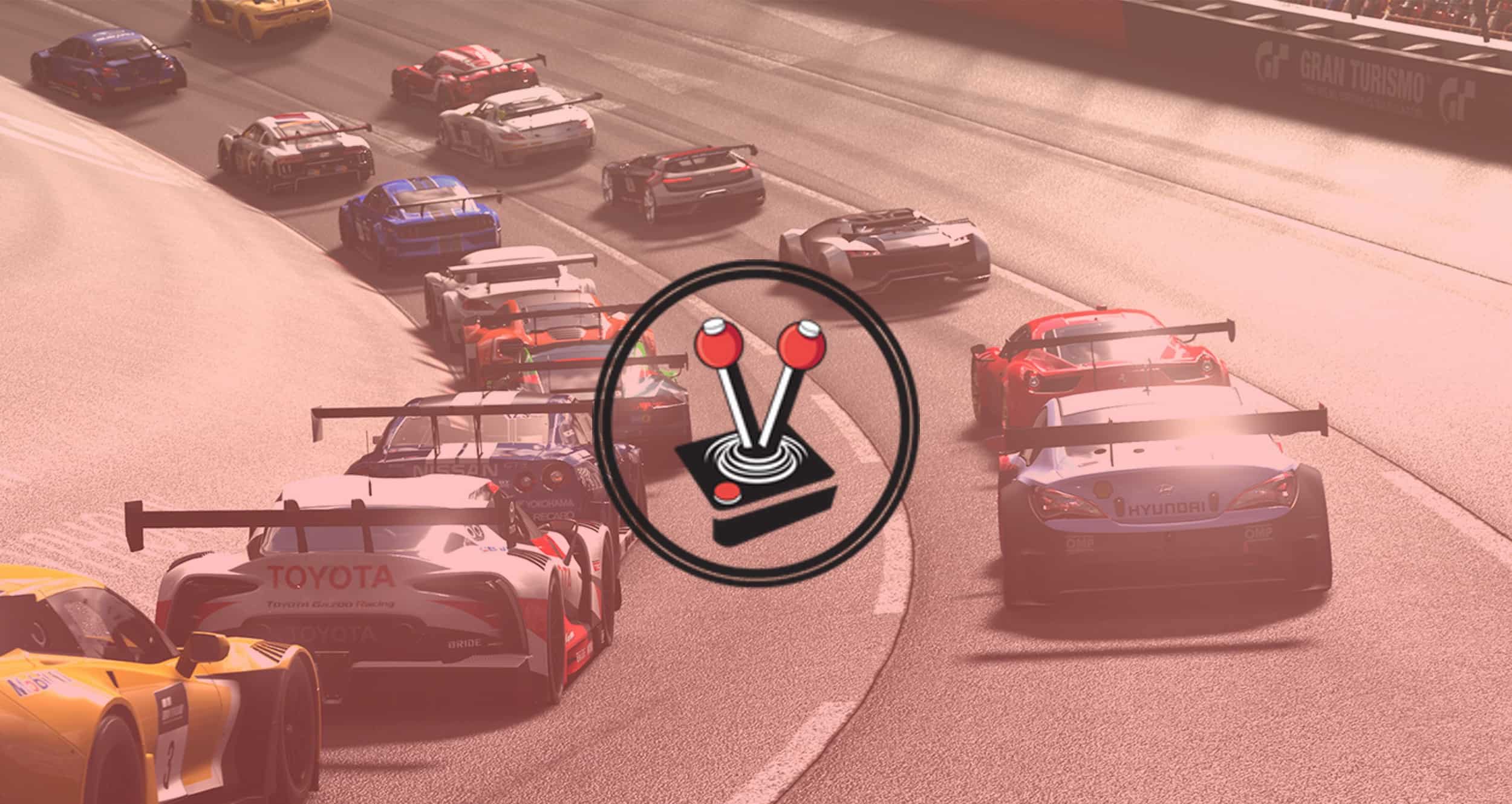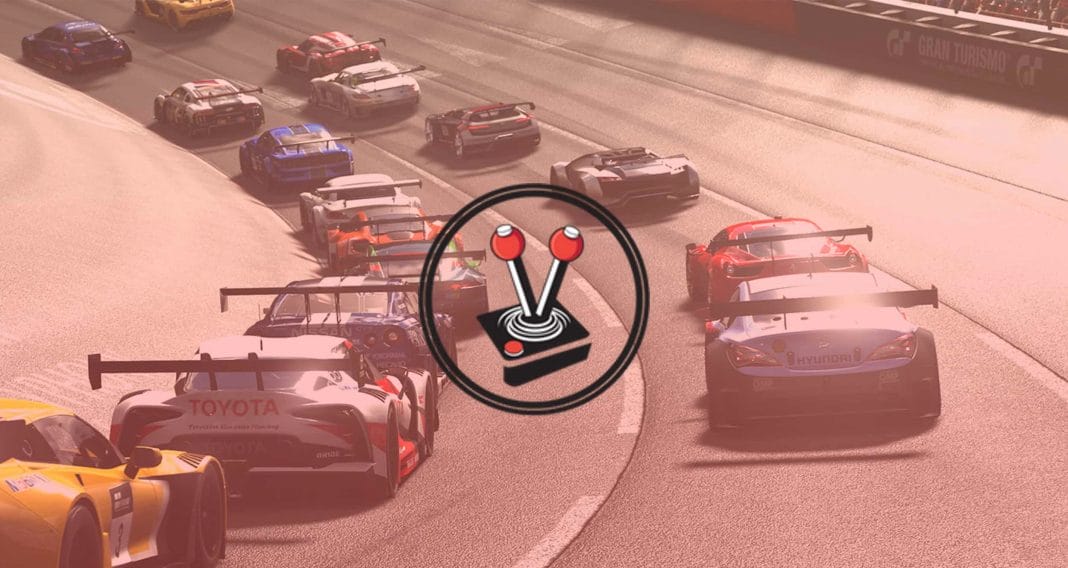GT Sport is the latest instalment in the Gran Turismo series. It is also the first game Polyphony Digital and Sony Interactive Entertainment have released for the current generation of consoles: PlayStation 4 and PlayStation 4 Pro.
Polyphony, as a company, has always been revered for attention to detail and have often been described as perfectionists. As a result, the GT line of games quickly became the benchmark for driving simulation titles, especially in terms of car details and physics. However, much has changed in the simulation landscape since Gran Turismo 5 (2010) and 6 (2013). Franchises like Forza Motorsport and Project Cars have quickly risen to compete, and even dominate, the Gran Turismo series. Nevertheless, the company has returned with a brand new entry in the series. With that said, however, I must stress that I really wonder where the last four years of development have gone, and what exactly happened during the game’s development cycle?
The game is no doubt good, but there is a certain something that it lacks… and I simply cannot put my finger on it. I first thought that the game lacked depth. I quickly realised this was not entirely true, since the game does offer quite an extensive number of features. However, it falters quite a bit when it takes itself too seriously with the Fédération Internationale de l’Automobile (FIA) affiliation. I think that this partnership, however great it may sound, was much to the game’s detriment. Although it takes the game in a totally new direction, especially when compared to the rest the series, it begs the question: is this new route going to lead the driver to a great destination, or leave them stranded on the side of the road without fuel?
Beautiful on the outside, slightly less so on the inside (Visuals)
Beauty and detail have always been a staple of the series, and Polyphony Digital did not fail to deliver in this regard. In fact, they have excelled. The opening in-game cinematic is goose bump worthy, and serves as a captivating introduction to the game. It also handily sums up every facet of the game and suitably preps you for the racing adventure that awaits. It goes without saying then, that this is possibly one of the prettiest games that I have had the pleasure of playing in 2017. For clarity’s sake: I played and reviewed Forza Motorsport 7 right before I jumped into GT Sport, and I can attest to the fact that, at least on my 1080p TV and on Hans’ 4K HDR enabled OLED, the cars look absolutely beautiful. It is a true showcase of the PlayStation 4’s power and heritage.
If you have ever played a Gran Turismo game before, it should come as no surprise that GT Sport is graphically stunning. The exquisite attention to detail on the cars, from the stitching in the leather of the seats through to the real world reflections on the automotive paint, is absolutely superb. The cars in the game really look amazing, and I dare say they are even nicer than those in Forza Motorsport 7. When you start to look at elements other than the cars, however, you will quickly realise that GT Sport falls short when compared to its Forza competitor.
The areas that you can race around seem beautiful in GT Sport. The stunning cars are met with, what appears to be, equally stunning environments. You will be able to race from the streets of Tokyo, through the iconic Nurburgring, and even on the dirtiest of rally tracks. Make no mistake: GT Sport is a graphically stunning game. There are little things, however, that set it back ever so slightly and destroy the game’s immersive quality. Things that I simply cannot wrap my head around.
As long as you keep moving in the game, it will continue to look fantastic. Yet, the moment you take a second and much harder look at these visual flourishes (especially if you happen to crash/stop on the track), the game’s immersive quality comes to a halt. You will notice that the character models in the pits, on the side of the road and even certain environmental textures, are rendered at such a low resolution that it completely ruins the immersive quality of the game. It is here that you will also notice how all of the fauna and flora are rendered in two dimensions and that even city scenery is absent of life. To be honest, it looks like they implemented PlayStation 3 era illusions to mock 3D foliage and environments. Every time I see them, I am reminded that this is a game. Yet these elements are not the worst offenders.
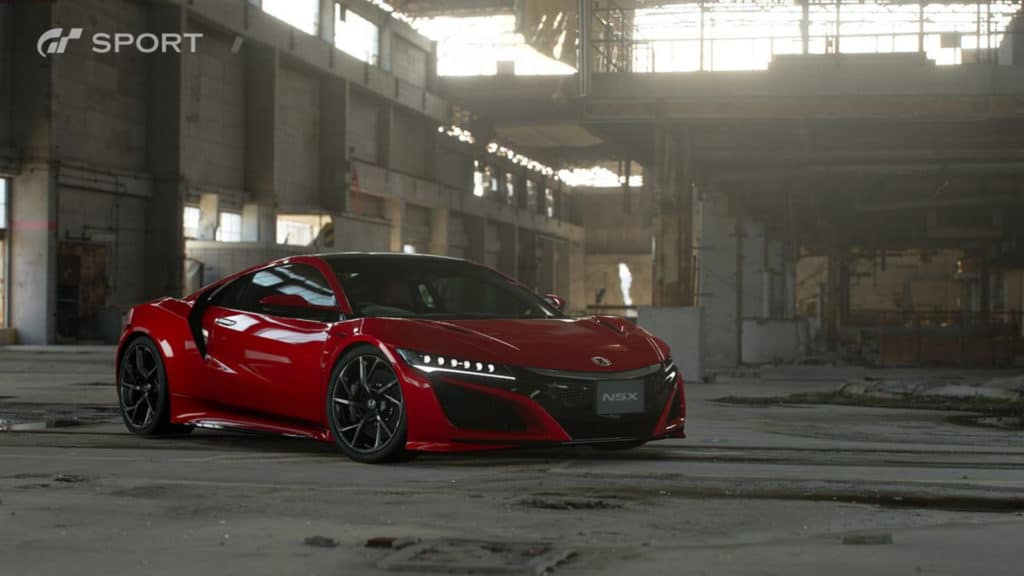
In the game’s defence, I do realise that it is about racing and some cut backs must be made to keep the game running at a silky smooth sixty frames per second. After all, the scenery simply whooshes by as you speed around the track and is not important to the feel of the cars or the game. With that said, I am utterly perplexed as to why the dashboard inside of the car has also been used to cut back on graphical resources.
The speedometer and other dash elements are rendered at such a low resolution, that even on a 4K display it makes it difficult to make out the numbers and letters (it is even worse in PlayStation VR). As someone who likes to enjoy the ‘cockpit view’ whilst driving, having dashboard elements rendered in such a poor resolution really destroys the immersive quality of the game. I sincerely hope that this will eventually be patched.
Whatever the case may be, I must stress that at least in terms of vehicles, this is one of the most beautiful games I have ever played. It is just set back – and so much too – by the little nuances that I felt had no place in a game released on a console in 2017.
With all of that said, I must say that the new ‘Scapes’ game mode is absolutely awesome. In this mode, players can position their favourite cars infront of beautiful scenes from around the world. No matter how you position the car; shadows, reflections, and lighting all adjust in real time. This mode is so good, that it borders on photorealism. In a previous article, I mentioned how this game mode makes it look like your vehicle has been featured on the cover of a car enthusiast magazine. This is true. Scapes is a loaded game mode, and works exceptionally well at providing a much needed aesthetic fix for car lovers. That is, as long as you remain online.
The curious case of a game turned license simulator (Always Online)
If there is one thing I must say about GT Sport, it is that the game is bold. It departs completely from the GT games that have come before it. Instead of an extensive list of cars that reach into the six-hundreds, you get 162 superbly detailed and marvellously rendered vehicles. Gone are the incredibly crisp car interiors and the full-fledged car tour, replaced instead with an equally beautifully new mode called Scapes; with a caveat being that this mode does not allow you to open your car doors or look at the engine. Instead of a strong single-player campaign where you race and unlock licenses, you get three arbitrary single player game modes that serve as nothing more than elaborate tutorials for obtaining real world licenses. Rather than giving players a decent single player campaign that can be enjoyed at leisure, the game offers an experience that always relies on a persistent Internet connection. Indeed, it seems that so much has changed in GT Sport that I simply cannot fathom how the developers could even label it as a new entry in the Gran Turismo franchise.
Instead of giving us everything that made old Gran Turismo games some of the best, Polyphony Digital decided to focus on making the game an official FIA (Federation Internationale de l’Automobile) title. This means that the game allows players to use it as a gateway into obtaining an officially sanctioned and approved motorsport license. In principle, this is good. Actually, it is really great. The problem, however, is that this has ultimately changed the game into a lacklustre husk of what it could have been.
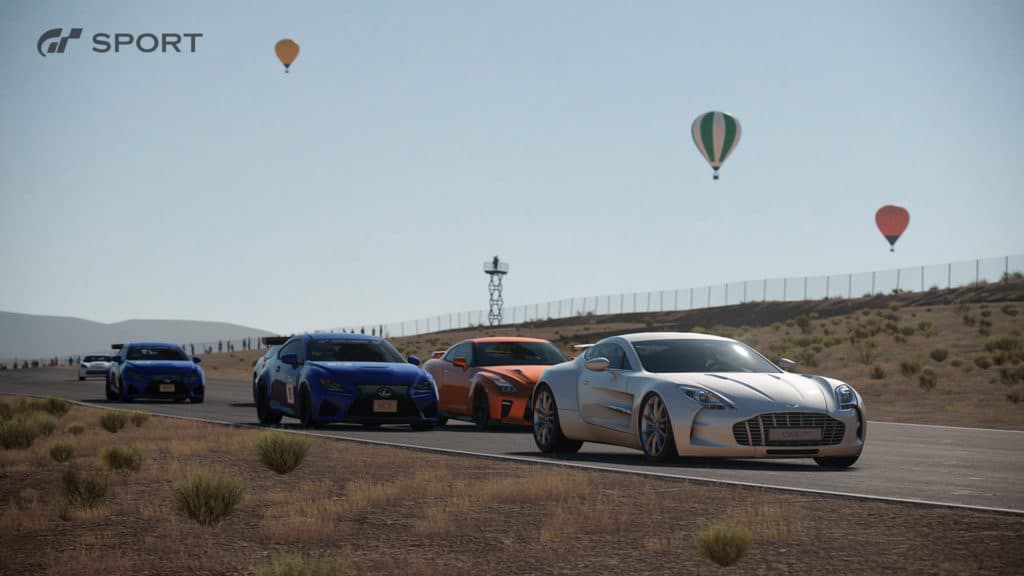
Gone are the days of a racing simulation game that not only broke new ground, but was also a lot of fun to play. Today, GT Sport is a glorified FIA license generator that must always be connected to the Internet in order to function. That is correct. The game is an online-only title (a future update is pegged to lessen the online nature of the game, but was not available for review). One that essentially clamps down on every single game mode (including the photo only mode, Scapes) the moment that your Internet connection cuts out. If you want to make any progress in the single-player campaign, or race towards collecting any of the many cars in the game, or simply take pictures of your cars; you have to be connected to the Internet.
The reason why the game is an always-online title is because, as per the FIA guidelines, players need to be exceptional drivers that are always aware of the other vehicles around them; players cannot cut any corners during races, or take any chances by driving others off the road. As such, the game needs to be permanently connected in order for the player’s driver score to update after every single race. Being a generally bad driver will flag you as someone who cannot continue with obtaining a motorsport license. This begs the question: how many of the millions of GT Sport players, those in third-world countries where Internet is a luxury, really want to – or care about – a motorsport license?
The biggest issue I have with this silly online restriction is the fact that the single-player mode is shut off from the player if the game is A: not up to date; and B: not online. I cannot fathom this at all. Granted, Gran Turismo games have always excelled in terms of simulation, and thus basing the game on obtaining real licenses might have seemed great conceptually. It might even be the reason why people in first world countries purchase the game; but to me, it is a perplexing decision because it has the ability to ostracise countless players who do not have reliable, and persistent, Internet connectivity. I have now become one of those ostracised players, and I feel cheated as a result.
Living that Virtual Reality life
Coming right back to the single-player career mode, I must ask why Polyphony Digital did not just call it ‘Drivers Ed’? Reason being that throughout the entire single-player campaign, you literally just learn how to drive various cars; how to corner and brake in all the tracks featured in the game; and how to brake and accelerate fast enough. That is literally it. There are no other players in these tests, challenges are basic and feel menial, and time trails require zero skill to complete. I dare say that the single-player campaign was an afterthought and nothing more.
With that said, as I finished the campaign’s three main sections, I did feel that my driving had improved considerably. This feeling was nice, but lacking. There is no tangible reward. Also, where was my A-class license of old? Why did I not have to work up to my B-class license? Why could I now race cars like the Aston Martin One-77 (gosh darn I need this vehicle in my life), but did not need to purchase a single car until I entered multiplayer? This disconnect is odd. This leads me to another big feature the game touts: PlayStation VR.
During my last few days of reviewing the game, I played it at the Vamers Studio where we have a PlayStation 4 Pro, and PlayStation VR headset. Admittedly the game looks phenomenal on the Pro. This goes back to what I said above about cars looking stunning. On the PlayStation 4 Pro replays are upped to 60 frames per second, with the caveat being that vehicles become more aliased. The game also outputs higher resolutions, as well as high-dynamic range (HDR) colour. It truly becomes an even more stunning experience. However, when it comes to Virtual Reality, I cannot help but feel like the mode was tacked on right at the end of development.
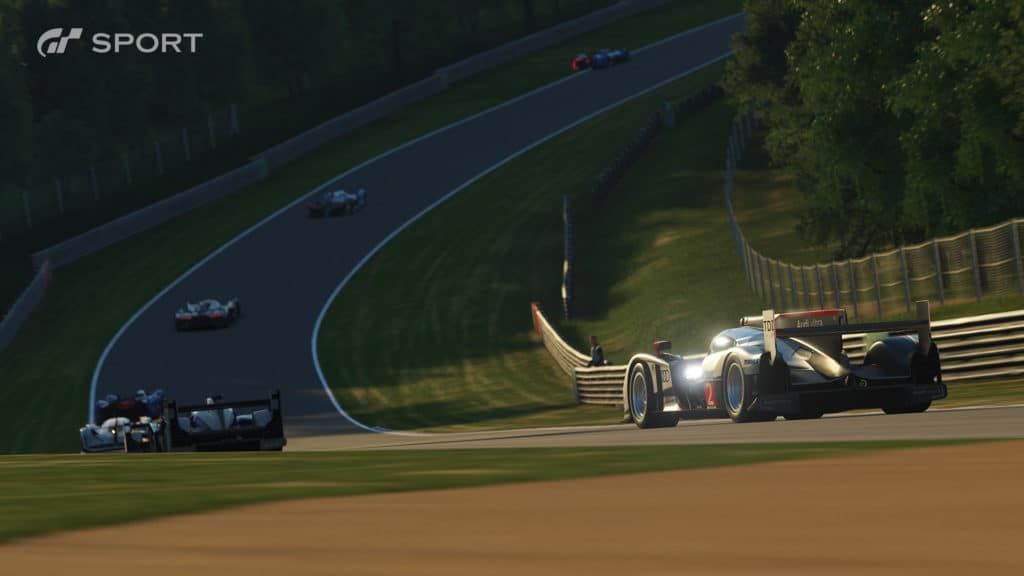
Virtual reality on consoles has gone largely uncontested. Currently leading this space is Sony’s PlayStation VR, a somewhat inexpensive VR headset that comes nowhere near the likes of the much more expensive HTC Vive, but serves as a good intermediate VR headset — and an outstanding headset for people who do not know any better. In my humble opinion, VR has served zero purposes in gaming up until now. For the most part, it often just serves as no more than a cheap gimmick. With that in mind, I must continue my review by stating that this is likely exactly what Polyphony Digital thought when they tacked the VR features onto the game.
With the PSVR headset, you can do one of two things. The first is taking a virtual walking tour around one of the cars in the game. In this mode, you cannot open car doors, the boot or bonnet to see the engine. You can literally only look at one of the 162 vehicles in the game, and nothing more. The second, and more exciting option, is being able to race around a racetrack.
In the VR race, you are seated in a car of your choice. From there, you race against one or two other racers. This would have been a serviceable game mode, but it is let down by a drop in graphics quality and even more so by the PSVR’s low resolution. This resulted in some truly terrible aliasing. As such, I must mention that the beauty and detail that Polyphony has put into the game’s cars also extends to the VR experience; but only up to a point.
It was so strange when I sat in the driver’s seat, looked into the rear view mirror, and the entire back of my car was missing. I get that this is a feature left over from the non-VR experience. I also appreciate that I have never noticed that before, but in VR, this was a major let-down. It immediately removed my suspension of belief and pulled me back to reality. Reminding me that this is nothing more than a game.
Similarly, since I could not tour the inside of the vehicle within the VR Tour, I took a few moments out of the race to look at the inside of the car, and I must say that a lot of the detail featured on the outside, was also on the inside. Stitch marks lined my seat, and beautifully rendered cloth made me feel like I was sitting in an actual car. However, none of the text in the car’s cockpit is legible; all of it is blurry.
Once again, the game’s weird disparity in detail reared its ugly head! Why would the car be so detailed to the point of having stitching in the seats, but the moment I look over to my gear knob or speedometer, every single letter and word is a blurred mess? Also, when I looked through the windscreen, I noticed that the sponsored labels on it were blurred as well. Considering that the game was fully patched and being played on a PlayStation 4 Pro, I must assume that these changes were intended in order to keep the PSVR running at a stable framerate.
Although these are small criticisms, the issue is that it immediately removed my suspension of belief; and pulled me back to reality. Reminding me, once again, that this is nothing more than a game
Better than my 10-year-old Toyota Yaris (Performance)
In the performance department, the game was an amicable contender. On my original PlayStation 4, tracks tended to take a while to load, but on the PlayStation 4 Pro these times were halved, if not more. Booting the game up was the only let down. The cutscene I mentioned earlier plays every single time the game boots. As great as it is, it really became a hassle every time I had to hold the skip button to get passed it. All game modes, including the VR ones, loaded equally as fast. The consistency was quite nice since I could at least tell when I would be able to finally play. With that said, I must stress how PC-like the entire User Interface (UI) is.
I believe this is a usual Gran Turismo thing, but it was weird when I opened up the game and was met with an interface I would expect from a Real-time Strategy Game on PC. Even then, however, I did not find it hard to traverse the UI at all. It is easy to understand and navigate. Perhaps the only thing taking away from the experience was the convoluted settings page. Even then, however, it was still easy to learn and get used to.
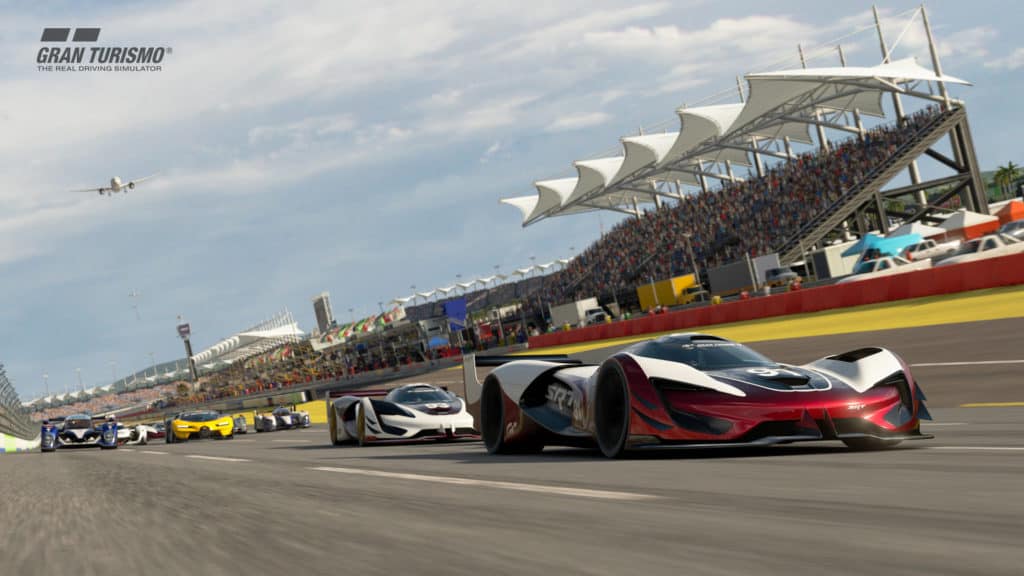
An interesting, and very welcome addition, is how the settings menu has an entire list of racing simulation peripherals that are compatible with the game. This is huge, considering I have had issues in the past where not even my old Logitech Joystick worked with a flight simulator. This way, at least you will know what works and what possibly does not.
Regardless of which variant of the PlayStation 4 I played on, once in-game and in a race, everything just worked. I am not susceptible to frame drops at all, but I must say that I did not feel like the game dropped in frames during my entire play through. It was neat how, after about a minute of waiting for a track to load, everything just flowed nicely and smoothly for the rest of the race. I dare say that the entire performance aspect was more smooth than the experience I get from my trusted, ten-year-old Toyota Yaris!
Few cars & little variation leads to a lacking experience – Conclusion
Let us be real: previous entries in the franchise touted thousands of cars per installment, hundreds of tracks, and great visuals. While the cars in GT Sport are no doubt beautiful, it offers only 150 cars, and 27 tracks. Give the detail in the cars, the reduction is understandable, but not appreciated. In comparison, Project Cars 2 boasted 180 cars, 182 tracks and 43 circuits at launch. Heck, even the popular (and personal favourite) Forza Motorsport 7 claimed at least 500 vehicles on launch – with almost as much detail as the cars in GT Sport. Given the previous instalments of these two games, I am pretty sure that it did not take the respective developers four years to figure everything out.
Gameplay in the game is decent, and fortunately not lacking. The problem with it, however, is that aside from the arcade mode, and multiplayer races, you only have Scapes to keep you busy after the campaign. Furthermore, the campaign really is just a glorified ‘Drivers Ed’. It serves as nothing more than a mode that teaches the player how to do things properly for that FIA license. This is not as big of an issue as you might think, but I must admit that as a single-player guy myself, I felt cheated.
Perhaps the game will mature as more content is released and Sony enhances the quality of their PlayStation VR headset. Until then, however, not even PlayStation VR would count as a valid selling point for the game. The VR novelty wears off very quickly because the VR Tour is lacking in just about every way, while the VR Races are so aliased and blurry that it is best to just play normally.
Furthermore, the incredibly low number of vehicles in the game made for a very poor experience. The game gifts you a single and randomly chosen car every time you get to a new level. Alas, the pool of cars gets very small, very fast. Similarly, the lack of cars made choosing a car before every multiplayer race feel very limited and, quite honestly, sad. With that said, I could not even choose which cars to drive during the single player Driving School. The game kept giving me cars, probably hoping that I would not realise how few cars are actually in the game.
All in all, GT Sport serves as a decent step in a bold and unusual direction for the franchise. I do not mind the inclusion of the FIA at all, but I do wish that they did not lock so many things behind an internet-requirement. If you are a PlayStation 4 owner, and also a petrol head, this game should definitely be on your radar. However, if you are a PlayStation 4 owner who also has an Xbox One, then you are definitely better off getting Forza Motorsport 7 instead. As a racing sim fan, I might end up picking GT Sport up after it has had some more time to mature… and after it goes on sale.
| Platform | PlayStation 4 |
| Difficulty | Normal, with only corner indicators |
| Time to complete | About 15 hours |
| Acquisition | Copy courtesy of Ster Kinekor Entertainment |
Junior Editor at Vamers. From Superman to Ironman; Bill Rizer to Sam Fisher and everything in-between, Edward loves it all. He is a Bachelor of Arts student and English Major specialising in Language and Literature. He is an avid writer and casual social networker with a flare for all things tech related.

